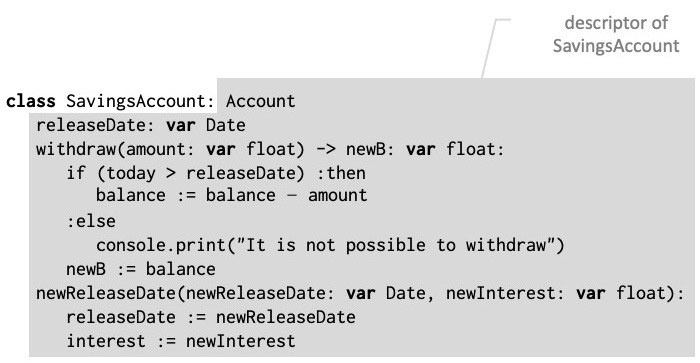In general an object-descriptor has the form as shown in the right column where SuperClass is the name of the class from which the object-descriptor is derived.
If no SuperClass is specified the object-descriptor is derived from class Object, which is … +++TBD.
SuperClass
Item1
Item2
...
ItemnSuperClass is the direct super class of the object-descriptor and if the object-descriptor is used to specify a class, SuperClass is the superclass of that class.
A possible superclass of SuperClass is an indirect superclass of the object-descriptor / class. The term superclass may thus refer to a direct superclass or an indirect super class.
The object-descriptor/class is a subclass of superclass +++ vi mangler en term for sub-object-descriptor.
Item1, Item2, ..., Itemn er items where each item is either a declaration or a statement.
Item1, Item2, ..., Itemn is called the mainpart of the object-descriptor/class.
The superclass Account of SavingsAccount is part of the object-descriptor as indicated by this figure where the object-descriptor for SavingsAccount is enclosed in a box:

A singular object may also have a superclass as shown below in the sketch of a special account for John Smith:
JohnSmith_special_account: obj Account
... 